Costume Designer Ann Foley on Creating the Cyberpunk Aesthetic of Altered Carbon
Netflix’s original cyberpunk drama, Altered Carbon, has become as known for the multifarious aesthetics it draws on — from Blade Runner to the works of Edgar Allan Poe — as it has for its philosophical leanings. Based on the novel of the same name by Richard K. Morgan, the show’s premise is that 300 years from now, the body is a mere “sleeve.” The mind, one’s true self, is stored in a “stack,” a disc that lives in the back of one’s neck. Unless a person’s stack was to be deliberately blown out, nobody has to die; they can simply be reprogrammed into a new sleeve. Of course, the form one’s new sleeve takes varies greatly between the wealthy and everyone else, and the religious are vocal opponents of the use of sleeves, period. Into this future world, a very capable mercenary named Takeshi Kovacs is awakened following a 250-year-long jail term. In his new sleeve (Joel Kinnaman), Takeshi learns he’s been freed to solve the murder of a seemingly perfectly alive member of the oligarchy, Laurens Bancroft (James Purefoy). Reluctant at first, he’s prevailed upon to take the case. As one might expect in a bleak, income inequality-afflicted future world, Takeshi soon discovers that Bancroft is hardly a saint, despite his literally lofty abode in the clouds, with the rest of society’s rich and powerful.
Fans of cyberpunk and science fiction have spotted cultural references and Easter eggs throughout Altered Carbon’s sets, but the costuming is a more restrained affair. We chatted with costume designer Ann Foley, who previously worked on titles like Star Trek: Into Darkness and Agents of S.H.I.E.L.D., about the simultaneous process of designing for the future and to signal social class.
https://www.youtube.com/watch?v=dhFM8akm9a4
When you approach a futuristic project, how do you decide which costumes will reflect present day and which will be more futuristic, like with Takeshi’s uniform white shirt?
It was a very large conversation that we had the beginning of the show with me, [creator] Laeta Kalogridis, and [producer] Steve Blackman. We felt that it was really important to keep the costumes grounded, because the production design and the VFX were going to be so wonderfully elaborate, that we needed the costumes to work beautifully in that environment. One of my favorite things, that I’ve seen in other futuristic films, like Blade Runner or Gattaca, is when you use the past to create the future. It can be a lot of fun, and can create something wonderful and beautiful. That was the aesthetic we were going for.
Characters in this world lead very different lives from one another. Was there a particular challenge in designing for that?
I think the challenge was to figure out a way to separate different groups within our world, like with the Grounders [the less fortunate, who live on the ground] from the Meths [the wealthy, who reside in the sky]. With the Grounders we went with more color, a lot of saturation, aging. It was multicultural; we were pulling clothes from all over the world and mixing things up, creating a melting pot for this group.
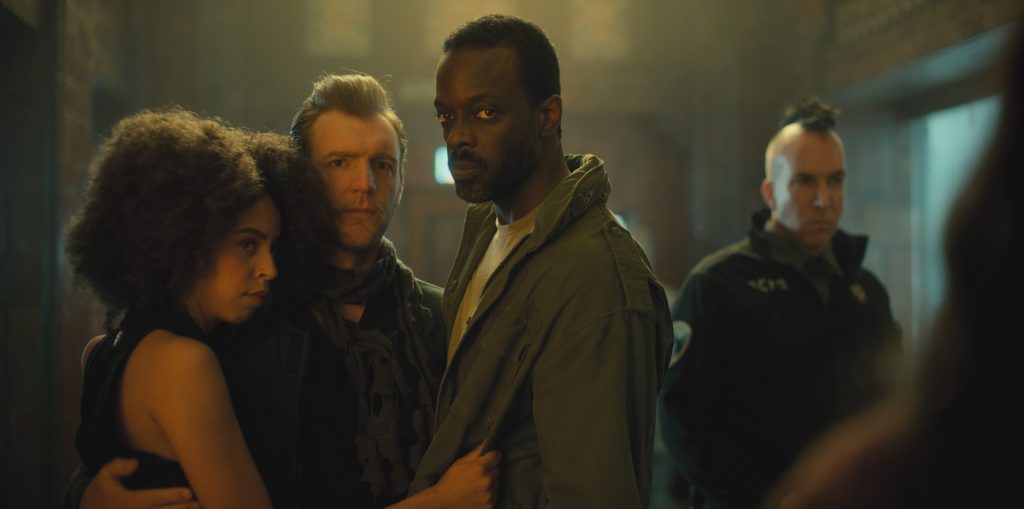
With the Meths, it was all about what these people who live up in the clouds are trying to say, how they’re separating themselves from the Grounders. We started playing with color, texture, and palette. Their clothes were made out of completely natural fibers, while down on the ground, we were playing more with plastics, polyesters, and other man-made fabrics. With the Meths, it was more blues, silvers, and golds, to reflect that cloud-like area where they live. There was a lot of sheerness, as well.
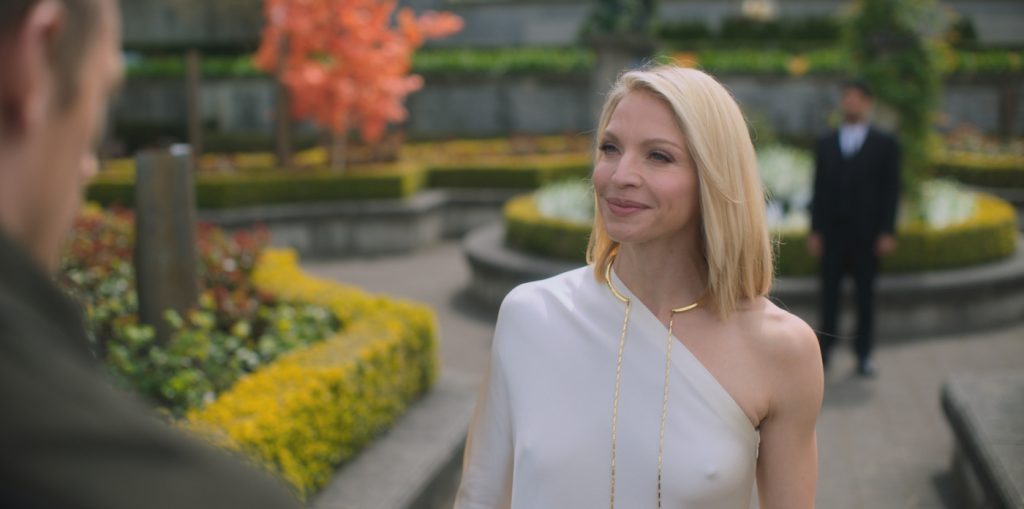
We noticed that the wealthy seem to have more “futuristic” elements in their clothing, while the poor do not. Is that a commentary on the stagnation of certain social classes?
Absolutely. I think that down on the ground the idea we’re working with is that the Grounders are very limited in terms of resources, and that would be with clothes, that would be with anything. You see a lot of recycling down on the ground. That’s even true with Grounders if something happens to their sleeve, their body — they get what’s available. The Meths have all the resources, access to all the money on the planet, they have access to everything they need and want. They can create as many clones as they want to, so they will never die. This is how they got their name, which is based off Methuselah. We wanted to reflect that.
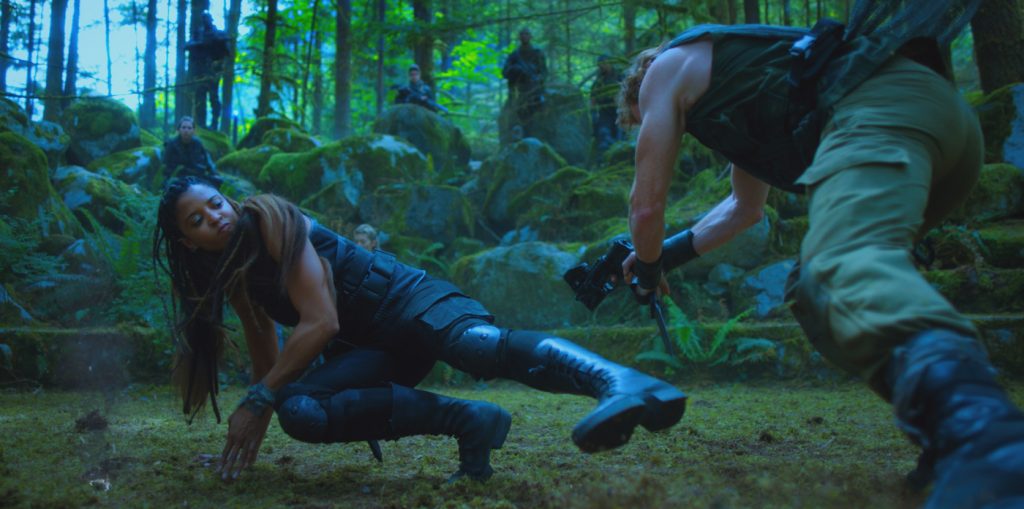
We get a sense of Blade Runner from some of the city sets, but the costumes are much more muted. What did you look to for inspiration, if anything?
I have my favorite inspirations I always draw upon, and every project I go into, I do mood boards not only for every environment but for each character. I spend hours and hours if not weeks culling these images from all over. It can be something as simple as a fabric and color, and that can inspire me for a character. Reileen [played by Dichen Lachman] is a really great example of that. When I was designing her costumes, I looked at a lot Japanese warriors, fabrics that had texture and movement, and really focusing in on the color green for her. Because the world where she and Kovacs grew up is lush and green. In every single one of her costumes, you’ll always see that color as a touchstone for her. That was something I hit on very early and it helped me to develop Reileen and who she was, because it informed me about her on an emotional level.
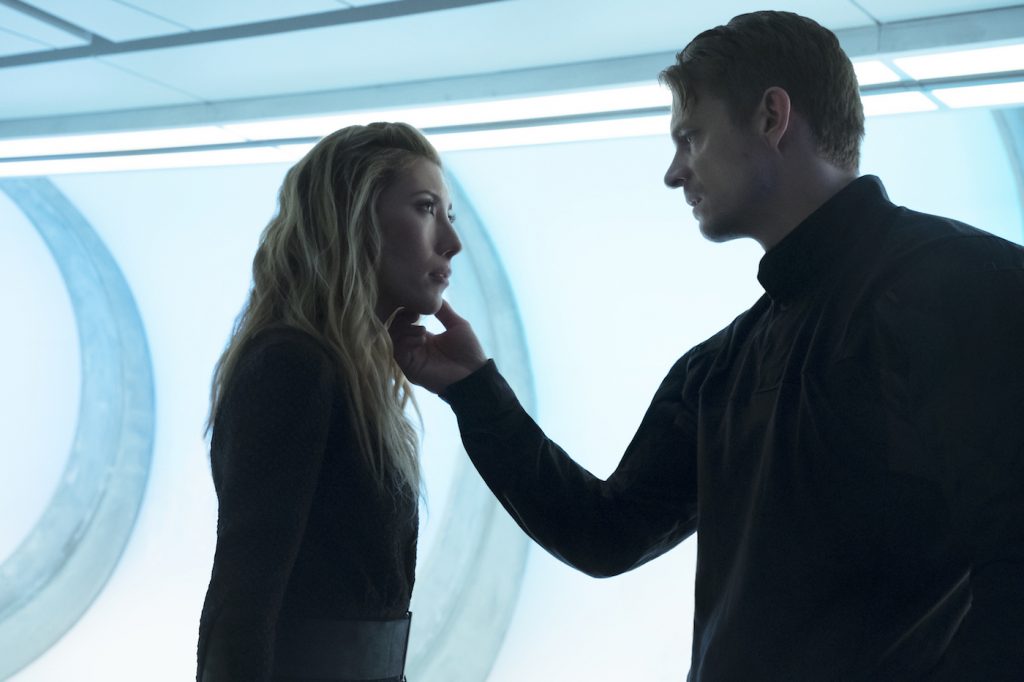
I think that’s important in designing a costume for any character. I really look to the script in those moments to help me figure out who this person is, and why are they wearing these clothes? There has to be a reason for each piece of clothing they have on, because as a designer, I’m trying to inform the audience and tell a story about who this person is, by what they’re wearing.
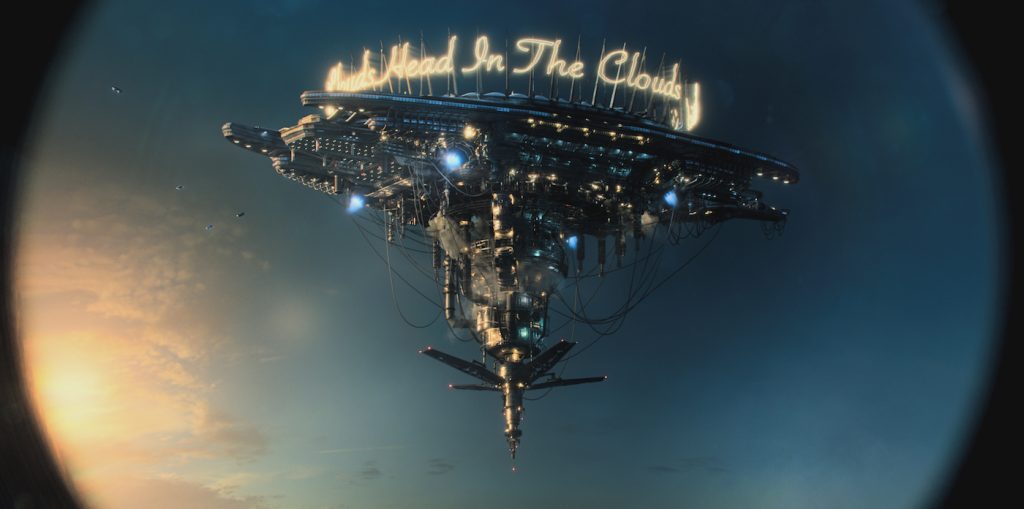
When working from something that has a book as its source material, how much do you draw from the writing and how much do you invent on your own? I have to admit I haven’t read the book.
It can. There are definitely elements from the book, and I think Laeta Kalogridis talks about that extensively. At the same time, it’s always a challenge when you’re bringing a book as dense as Altered Carbon to the screen. Because of the nature of a television series, over the course of ten episodes, things will change. So, for me, I find that it’s better to stick with the script and where we’re going. The original source material is always wonderful to have to help possibly guide in one direction or another, but it’s really all about the shooting script.
You’ve now worked on Altered Carbon, Star Trek: Into Darkness, and Agents of S.H.I.E.L.D. Did you get into sci-fi deliberately or did it happen naturally?
It happened by accident! I will say, one of the most wonderful things about being an assistant designer, which I was for about 10 years, I was fortunate enough to work with incredible costume designers, like Michael Kaplan on Star Trek and Ellen Mirojnick on Behind the Candelabra, and Marlene Stewart on Hansel & Gretel. These designers were such an inspiration to me, and they were mentors as well. The only reason I’m here today is because of them. The beautiful thing about being an assistant is getting to work on something like Star Trek, and then moving into Behind the Candelabra, which couldn’t be more different. I mean we went from science fiction to rhinestones and sequins and feathers. That’s the beauty of costume design — you never know what you’re going to get, and you have to be prepared for any job challenges it’s going to bring. But back to your original point, I do seem to be much more in the science fiction lane these days.
Featured image: Renee Elise Goldsberry in ‘Altered Carbon.’ Courtesy Netflix.



